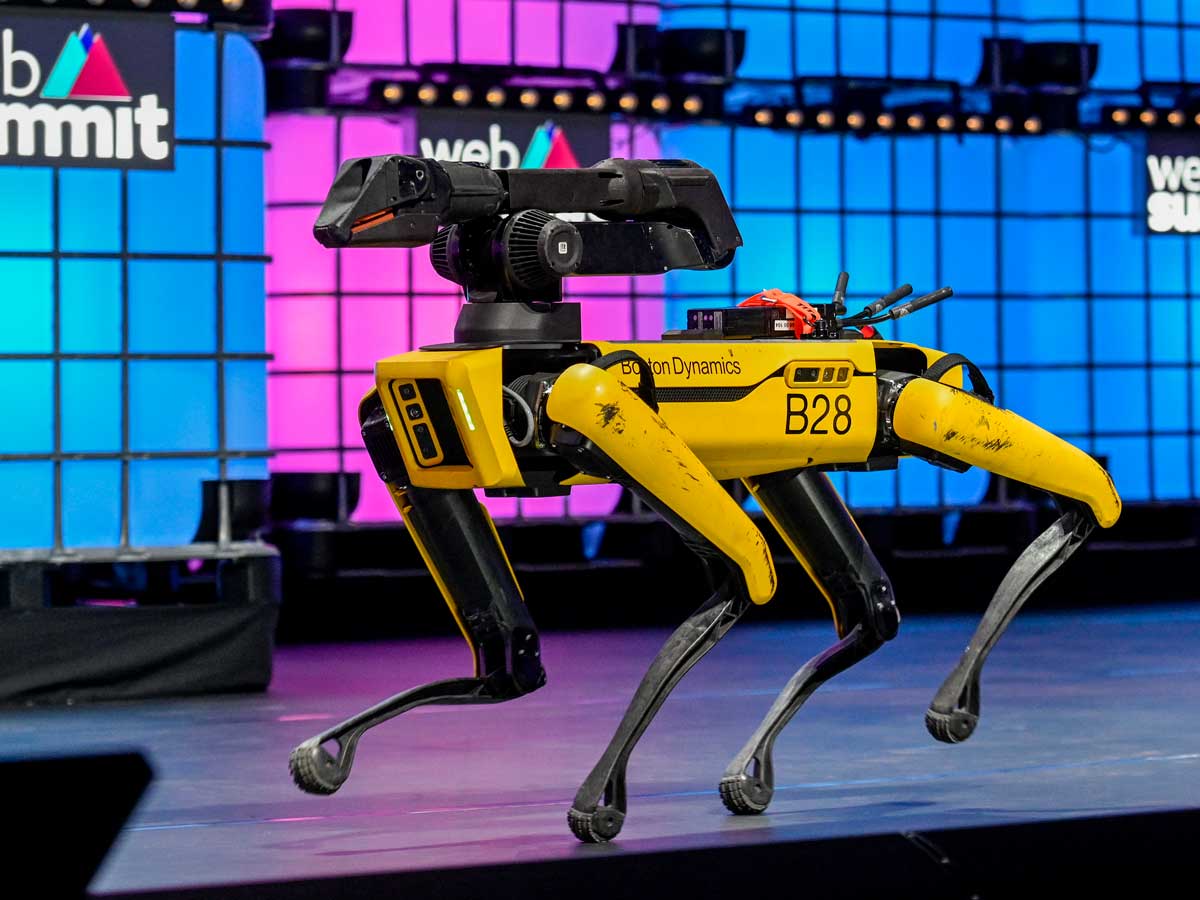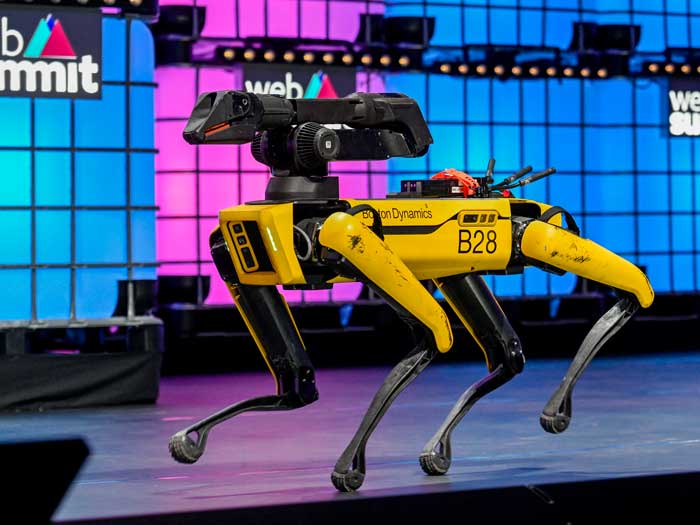
4 current technologies that are creeping us out
 Boston Dynamics’ four-legged, doglike robot Spot is now on sale (Getty Images/Horacio Villalobos/Contributor)
Boston Dynamics’ four-legged, doglike robot Spot is now on sale (Getty Images/Horacio Villalobos/Contributor)
The start of 2020 gives us reason to look ahead at where technology can take us. There’s no question that the rapidly evolving pace of technology is changing the way we do business. And CPAs must be aware of key trends, such as cybersecurity, big data and data analytics, artificial intelligence (AI), blockchain and more. Regardless of your role, technology can have a profound and often positive impact on the profession—but new tech can also be disturbing.
New technology has been unnerving us for centuries. The first public steam-powered train caused fears that humans were simply not designed to go 80 kilometres an hour. The New York Times warned that Alexander Graham Bell’s improved telephone meant that “we shall soon be nothing but transparent heaps of jelly to each other.”
Our apprehension towards new technology has only picked up alongside our rate of innovation. Here are four technologies that are giving us unpleasant feelings, ranging from slightly peculiar to downright nightmarish.
1. VOICE ASSISTANTS
In a study identifying what makes certain technology unsettling to children, mimicry came up repeatedly. And nothing does spooky mimicry better than Google Assistant, Amazon Alexa, and Apple’s Siri. As voice assistants attempt to replicate real people by cracking jokes and teasing, their behaviour and speech can seem almost too human, which can be deeply unsettling.
But it goes beyond entering the realm of the uncanny valley—when an object’s close resemblance to a human being provokes feelings of eeriness. In one survey, more than half of the respondents said they find it creepy when brands target them with ads based on what questions they have recently asked their voice assistant. And a majority also worry their voice assistants are listening without their consent. The fears are founded, especially as Google admits that employees have been able to access conversations which were not meant to be recorded. The company since revamped the technology and no longer saves recordings by default. Scariest yet, Amazon was forced to step in with a fix after reports that Alexa was letting out unprompted, witch-like bursts of laughter.
2. ROBOTIC ANIMALS
While fictional androids from movies like Terminator and Alien have taught us to fear humanoid machines, some of today’s creepiest robots are modelled after animals. Boston Dynamics has been behind viral robot videos for years. In 2019, the company brought their terrifying creations to the real world—the four-legged, doglike robot Spot is now on sale.
But if a robot dog creeps you out, other new machines take after more loathsome creatures. In 2019, scientists created a tiny cockroach-like robot, with the similar ability to survive being stepped on. Among its applications, the small robot’s toughness and speed could make it ideal for search-and-rescue following an earthquake. In Japan, scientists have developed a snake-like robot for similar operations.
3. FACIAL RECOGNITION
Internet-connected home devices are made up of everything from lawn sprinklers to thermostats to vacuum cleaners. Even your connected bed can measure the quality of your sleep. But it’s the facial recognition-enabled tech that has left some feeling unsettled.
The Google Nest Hub Max utilizes the display’s front-facing camera not only as a security feature, but to show you relevant texts, photos and other information when it recognizes your face. Google says it occasionally pulls facial data to the cloud to help improve product experience, but it’s not the only tech company that’s storing your face or voice data. If you’re letting a device record your face for any reason, it’s likely to end up in the cloud. Facial recognition has been pitched as the future of everything from advertising to law enforcement. But among its issues is accuracy: an ACLU study found Amazon’s facial recognition tool matched 28 members of Congress with mugshots.
4. DEEPFAKES
Seeing is not believing; at least, not in the age of deepfakes. Deepfakes get their name from deep learning technology, a type of machine-learning that can replace a person from an original video with someone else by transposing the new face onto a target. The result is the ability to create fake videos that look and sound just like the real things. Simple software tools have now made the technology available to all. But as the technology improves—and the deepfakes become even harder to detect—the dangers become even more pronounced, including election meddling and blackmail. But beyond that, it removes our ability to believe our own eyes. This issue is far from being neglected though—a new deepfake detection tool is said to expose the fakes with greater than 90 per cent accuracy.
MORE TECH NEWS
Take the edge off your multitasking with accountant-friendly gadgets, the next generation of devices and the tech tools to make your accounting life easier. Learn about the newest tech trends with CPA Canada’s Technology Spotlight series. Or, learn about technology issues facing CPAs in this CPA Canada webinar.